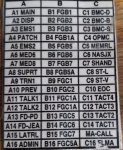JFRD has a unique system where every single dispatch is broadcasted across A-1 through A-4. In a simpler form, you will never miss a dispatched call if you are listening to these talk groups. A-1 or EMS-East covers medical call traffic South and East of the St Johns River, A-2 is the main dispatch talkgroup. You will typically only hear dispatching and non-emergent admin traffic on this talkgroup. A-3 or EMS-West covers medical traffic North and West of the St Johns River. A-4 or Suppression covers small fire radio traffic and public assists, city-wide. JFRD units monitor A-2 on a typical basis. Once they receive a call, they will swap to the proper channel per either the location or nature of the call as stated before. To further explain this, When units are on A-3, they will still hear every call being dispatched city-wide from the dispatchers. The only difference is that only EMS West traffic will be heard between dispatches.
When a larger incident is dispatched, units are instructed to either switch to B-1, B-5, B-9, or B-13. If you pay attention to the initial dispatch, you will hear the assigned talk group. As an example, you will typically hear it in this order: "Fire District 1 Talk-group Bravo 1 residential structure fire for engines xxx ladders xx fires(chiefs) xxx rescues xx and a RIT assignment, blank address, all units responding talk group Bravo 1." If you miss the initial dispatch, they will typically repeat this without each individual unit within 20 seconds from the initial traffic.
I sure do hope this clears up some of the confusion. I, like you, was confused when I originally got to Jacksonville as well.


